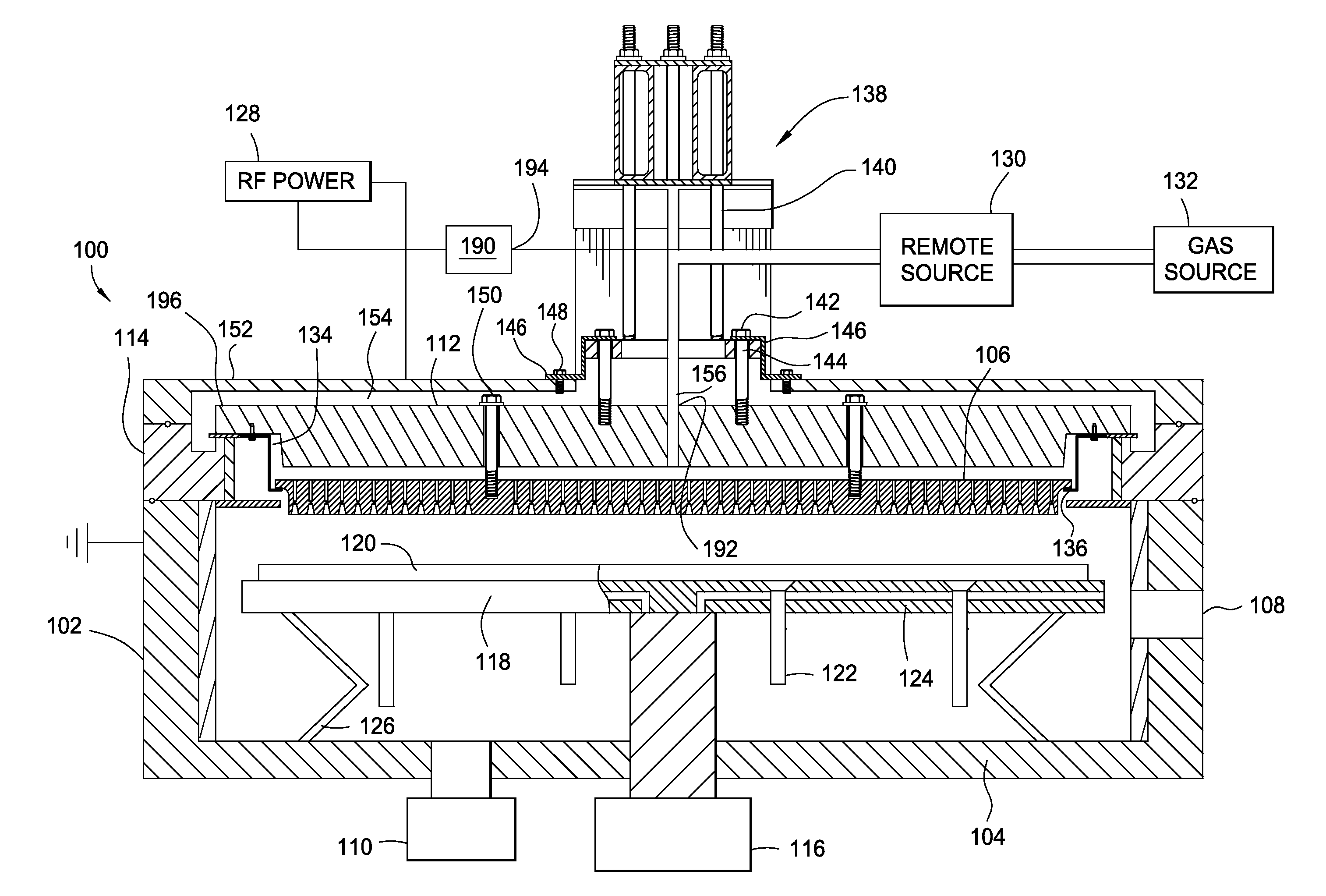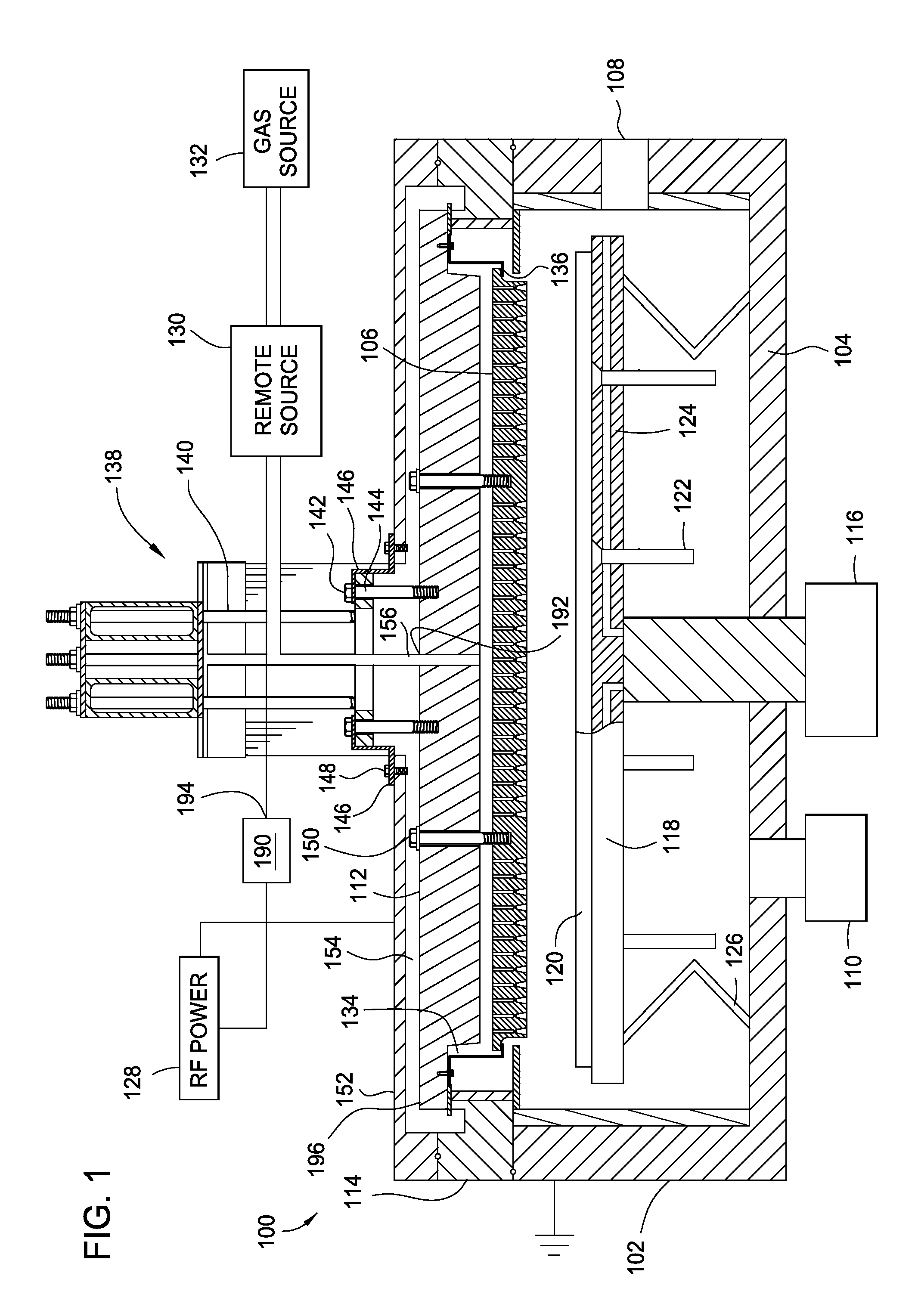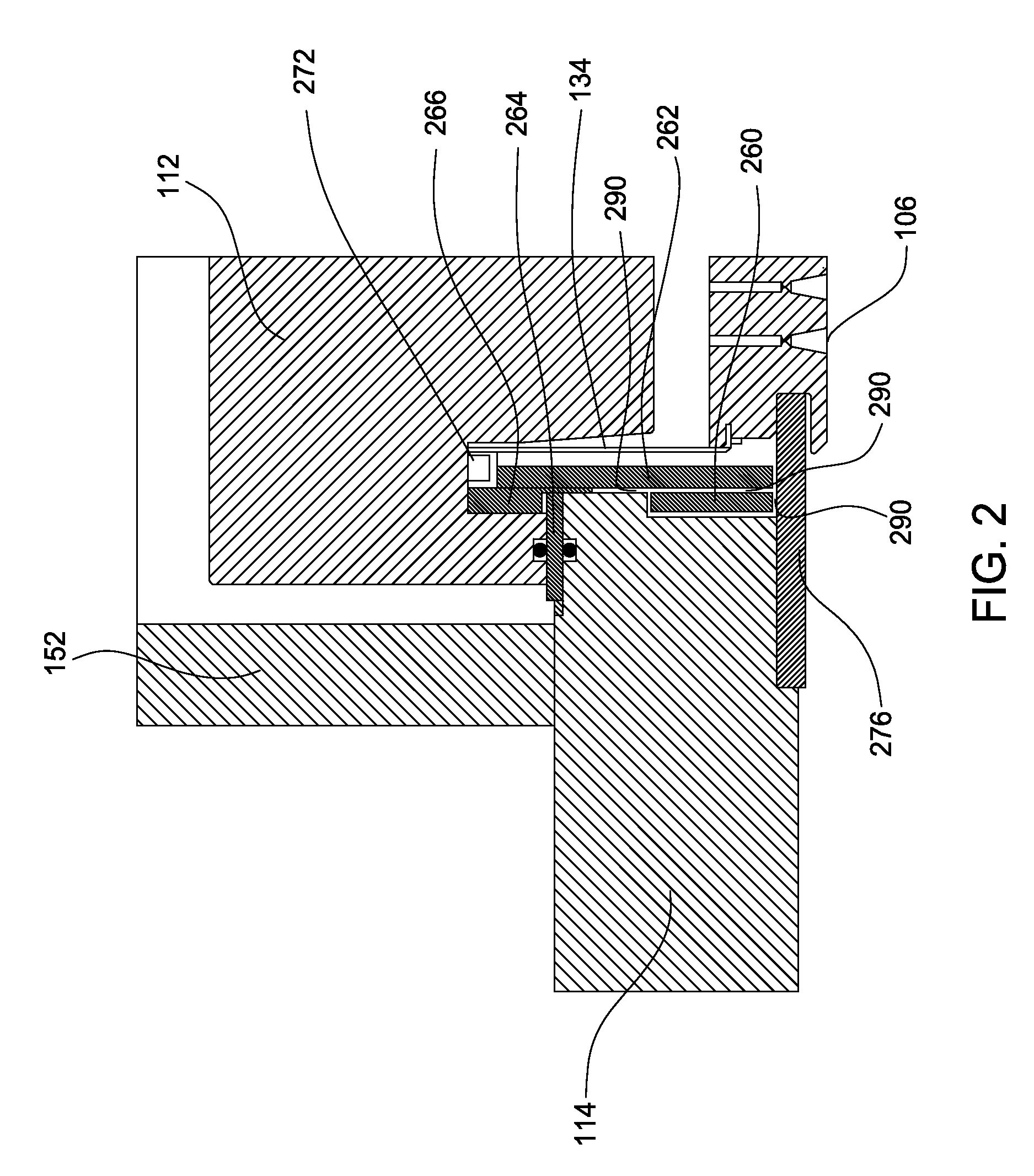Plasma monitoring and minimizing stray capacitance
a capacitance monitoring and capacitance reduction technology, applied in the field of capacitively coupled plasma (ccp) processing chambers, can solve the problems of stray capacitance negatively affecting the process, rf ground straps may break, etc., and achieve the effect of reducing or preventing stray capacitance and minimizing stray capacitan
- Summary
- Abstract
- Description
- Claims
- Application Information
AI Technical Summary
Benefits of technology
Problems solved by technology
Method used
Image
Examples
Embodiment Construction
[0020]The present invention generally relates to a CCP processing chamber, a manner to reduce or prevent stray capacitance, and a manner to measure plasma conditions within the processing chamber. As CCP processing chambers increase in size, there is a tendency for stray capacitance to negatively impact the process. Additionally, RF ground straps may break. By increasing the spacing between the chamber backing plate and the chamber wall, stray capacitance may be minimized. Additionally, the plasma may be monitored by measuring the conditions of the plasma at the backing plate rather than at the match network. In so measuring, the plasma harmonic data may be analyzed to reveal plasma processing conditions within the chamber.
[0021]Embodiments discussed herein may be practiced in a PECVD chamber available from AKT America, a subsidiary of Applied Materials, Inc., Santa Clara, Calif. It is to be understood that the embodiments discussed herein may be practiced in other processing system...
PUM
 Login to View More
Login to View More Abstract
Description
Claims
Application Information
 Login to View More
Login to View More - R&D
- Intellectual Property
- Life Sciences
- Materials
- Tech Scout
- Unparalleled Data Quality
- Higher Quality Content
- 60% Fewer Hallucinations
Browse by: Latest US Patents, China's latest patents, Technical Efficacy Thesaurus, Application Domain, Technology Topic, Popular Technical Reports.
© 2025 PatSnap. All rights reserved.Legal|Privacy policy|Modern Slavery Act Transparency Statement|Sitemap|About US| Contact US: help@patsnap.com



